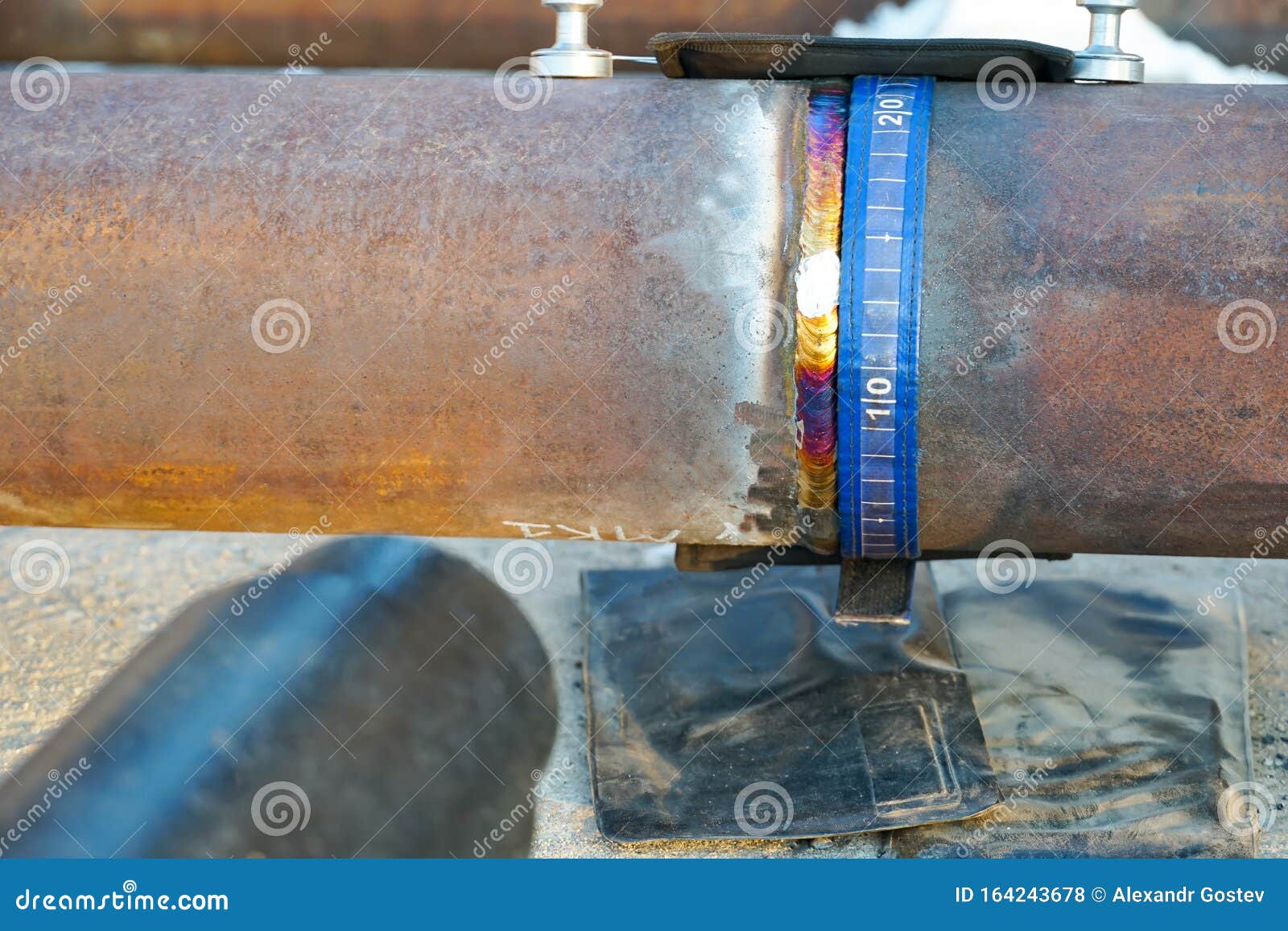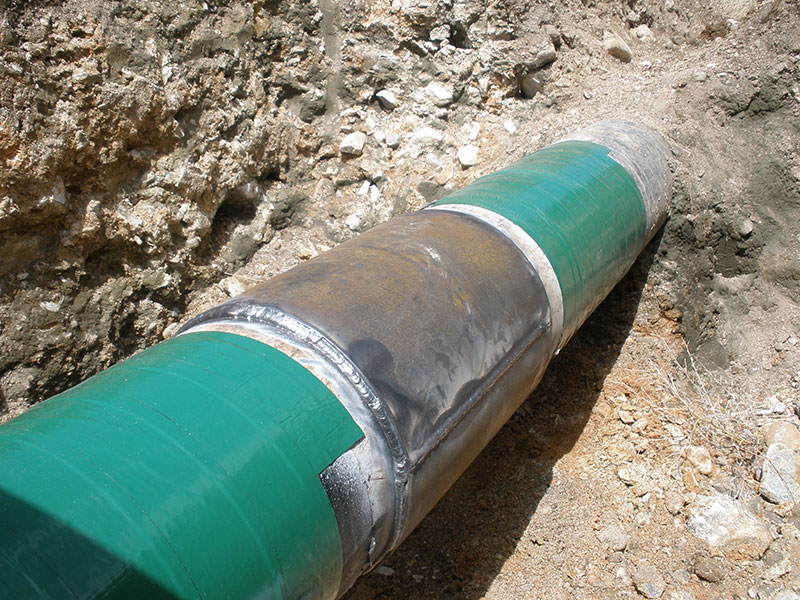Pipeline Welding Inspection: Safeguarding Pipelines with Precision and Proficiency
Pipeline Welding Inspection: Safeguarding Pipelines with Precision and Proficiency
Blog Article
Advanced Techniques in Pipe Welding Inspection: Technologies and Technologies for Boosted Precision and Reliability in Weld Evaluation
The landscape of pipeline welding assessment is going through a significant change, driven by advanced methods that guarantee to improve both accuracy and reliability in weld assessments. Developments such as automated evaluation systems and advanced imaging modern technologies are redefining conventional methods, while non-destructive testing methods ensure material integrity is kept.

Importance of Weld Assessment
Ensuring the honesty of pipeline welds is crucial to the total safety and reliability of commercial systems. Extensive assessment of welds is integral to the lifecycle of pipeline facilities.
The relevance of weld assessment prolongs past mere conformity with regulatory requirements. It works as a proactive procedure to identify and rectify imperfections, such as insufficient fusion, porosity, or fractures, prior to they rise right into significant problems. Efficient evaluation methods additionally add to the durability of pipes, decreasing upkeep expenses and improving functional performance.
Furthermore, thorough weld examinations foster trust fund amongst stakeholders, consisting of regulatory bodies, capitalists, and the neighborhoods offered by these pipes. By guaranteeing that all welds satisfy the needed criteria, organizations can alleviate dangers and copyright their credibilities. In recap, weld examination is vital not only for functional honesty but likewise for the more comprehensive ramifications it holds for safety and ecological stewardship.
Automated Inspection Equipments
The assimilation of computerized evaluation systems in pipe welding has revolutionized the technique to making sure weld quality and stability. These systems use advanced robotics and artificial intelligence to perform inspections that are not only much faster yet also much more consistent than conventional techniques. Automated systems can cover considerable sizes of pipelines effectively, catching data that human assessors may overlook due to fatigue or environmental problems.
Among the crucial benefits of automated evaluation systems is their capability to run in unsafe environments, minimizing the danger to human inspectors. They make use of different non-destructive testing (NDT) techniques, such as ultrasonic testing and magnetic fragment assessment, to analyze weld integrity without endangering the structure. The data collected is processed in real-time, enabling instant comments and prompt restorative activities when defects are identified.
Furthermore, automated systems promote the standardization of inspection procedures, making sure that each weld is reviewed versus regular requirements. This not just enhances the reliability of results however likewise simplifies conformity with regulative criteria. As sectors remain to focus on safety and security and functional effectiveness, the role of automatic evaluation systems in pipeline welding will certainly expand, leading the way for much more innovative top quality guarantee methods.
Advanced Imaging Technologies
Frequently employed in contemporary pipe welding assessments, advanced imaging modern technologies have actually substantially enhanced the capacity to identify and examine weld problems. Strategies such as digital radiography, computed tomography, and thermographic imaging provide assessors with high-resolution images that disclose sub-surface problems and structural disparities that might be invisible to the nude eye.
Digital radiography uses digital sensors to record pictures, allowing for instant testimonial and improved photo contrast. This leads to faster inspections and enhanced precision in identifying essential flaws. Calculated tomography, on the other hand, provides three-dimensional imaging, making it possible for examiners to envision complex geometries and examine the honesty of welds from several angles - Pipeline Welding Inspection. This deepness of evaluation is important for identifying issues that conventional techniques might overlook.
Thermographic imaging uses infrared innovation to identify variations in temperature, determining areas of prospective weakness or tension within the weld. These innovative imaging modern technologies not only boost flaw detection prices however likewise lower the moment and resources required for pipeline assessments. Therefore, they play a critical role in maintaining pipeline safety and security and integrity, making certain compliance with industry criteria while lessening functional dangers.
Non-Destructive Testing Methods
Using different strategies, non-destructive testing (NDT) methods are crucial in pipeline welding inspections, enabling the evaluation of weld integrity without compromising the product's architectural stability. NDT incorporates an array of techniques, consisting of ultrasonic testing (UT), radiographic testing blog (RT), magnetic bit screening (MT), and dye penetrant testing (PT) Each technique has distinctive advantages and applications depending on the certain demands of the assessment.
Ultrasonic screening makes use of high-frequency acoustic waves to identify inner flaws, supplying exact dimensions of weld density and integrity. Pipeline Welding Inspection. Radiographic testing uses X-rays or gamma rays to create pictures of the weld, disclosing internal flaws that might not show up on the surface. Magnetic fragment screening works for identifying surface area and near-surface discontinuities in ferromagnetic materials, while color penetrant screening highlights surface cracks by utilizing a tinted color
Incorporating these NDT techniques into pipeline welding inspections improves the accuracy and reliability of weld analyses, guaranteeing that possible failings are recognized early. As markets require greater criteria for safety and efficiency, the role of NDT in preserving the integrity of welded structures continues to be pivotal in pipe construction and maintenance.

Future Trends in Weld Assessment
As we want to the future of weld assessment, improvements in technology are poised to revolutionize the techniques used for examining pipeline stability. The integration of expert system (AI) and equipment discovering in assessment processes is anticipated to enhance the precision of flaw discovery and predictive maintenance. These technologies permit for real-time data evaluation, allowing assessors to recognize possible issues prior to they rise into significant issues.
Additionally, the use of drones equipped with advanced imaging systems is gaining grip. These airborne evaluations can cover vast areas rapidly, capturing high-resolution photos and information that can be analyzed for flaws in hard-to-reach locations. This not just boosts safety yet likewise increases efficiency in the evaluation process.
Additionally, the advancement of clever sensing units installed in pipeline systems uses the potential for continuous monitoring. These sensors can find changes in stress, temperature, and vibrations, supplying valuable understandings right into the health and wellness of the welds in time.

Conclusion
To conclude, the combination of advanced strategies in pipe welding evaluation considerably improves the precision and integrity of weld evaluations. Developments such as computerized inspection systems, progressed imaging technologies, and non-destructive screening approaches play a vital function in improving flaw discovery rates and cultivating aggressive upkeep approaches. go to this web-site As these modern technologies continue to evolve, they will even more ensure the safety and security and effectiveness of pipe systems, eventually adding to the integrity of critical framework.
Report this page